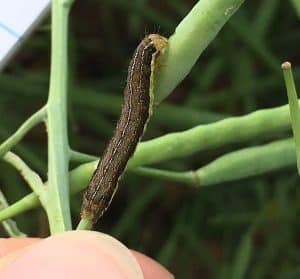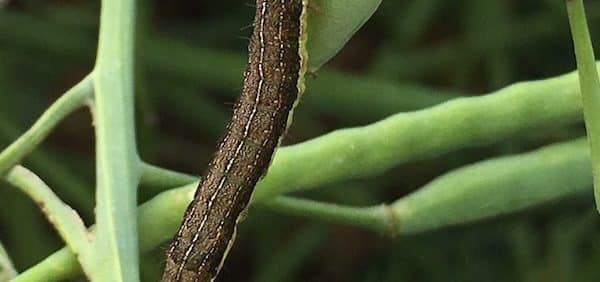Scout for bertha armyworm, lygus bugs and diamondback moth larvae on pods, but only spray if insects counts are at or above economic thresholds. Applications made when insect numbers are below thresholds will not provide a positive return on investment and can do unnecessary harm to the many beneficial insects that help keep pest insect populations low. These six questions provide a review of thresholds.


